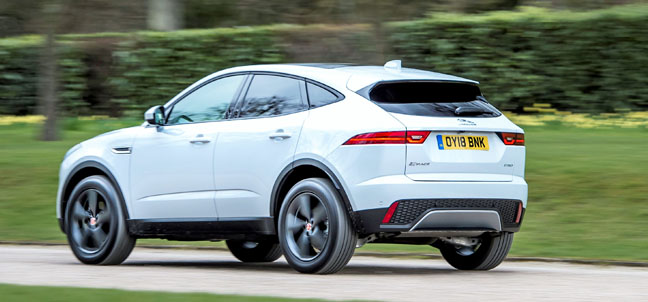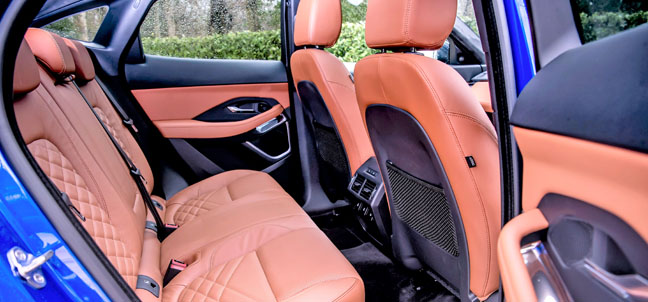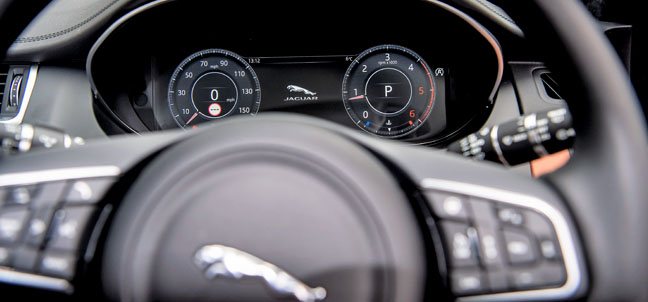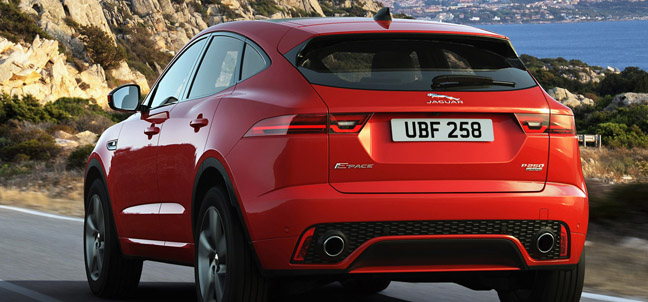Pitched into the space just below F-Pace, I was shocked to learn from the spec sheet that the Land Rover Discovery Sport-based model tips the scales at a whopping 85kgs more than its bigger brother, which makes my choice of the 2.0-litre 147bhp turbodiesel power unit not as apposite as the Ingenium 296bhp turbo-petrol. 1.8-tonnes cannot be described as ‘compact’, no matter how you cut it.
To be fair, I have always quite liked the look of the car, since I first spotted a prototype version in late-2015, with its clear links to the F-Type sportscar and deliciously clipped design elements. What has never ceased to amaze me is that, despite its strong sales performance, it has never figured on my test car list. While I am sure that starting at the lower and less costly end of the range will have some attractions, I fear that not tackling the performance end may cause me to regret the decision.

Although I am informed that Jaguar has some ‘fixes’ yet to be applied to E-Pace, I have to state that the cabin’s visual appeal is good initially but peer a little deeper and it is apparent that a few trim shortcuts have been applied. The quality of the plastic mouldings is not what I would expect from a ‘premium’ grade sporty SUV. Yet, the cabin is a comfortable place to reside, with a wide range of adjustability to both driver’s seat and steering column. Spend a bit extra and electric adjustment becomes available.

The cockpit is very driver focused, even though the ride height is surprisingly lofty and makes you feel hemmed-in, as though you are perched on, rather than in the command position, with poor rearward and over-the-shoulder visibility. The seats are comfortable and there is just about enough space on the rear bench for three abreast seating. Equipment levels are good, even though the touchscreen feels a bit antiquated and sometimes both slow to react and inconsistent in its operations (it sometimes takes a second ‘push’ to get it reacting).

Equipped with the optional 9-speed automatic transmission driving only the front wheels, overcoming an initial lack of inertia was met with modest punch and, as long as you do not ‘floor it’ everywhere, although the temptation is high, the E-Pace can be hustled along at a moderate rate. There are 178 and 237bhp diesel engine options (as well as petrol equivalents) but the 147bhp version makes a decent fist of things, despatching 0-60mph in around 10.0s, with a posted top speed of 120mph. Against a stated 52.3mpg, the test car attained a moderate 48.8mpg, while emitting 143g/km CO2.

Even riding on optional 20.0-inch diameter alloy wheels, which set it off nicely, its ride quality is tolerably firm. Nicely weighted steering is supported by decent body control and surprisingly taut handling. E-Pace is refined but you can feel the vibrations of the diesel engine through the steering wheel and foot pedals.